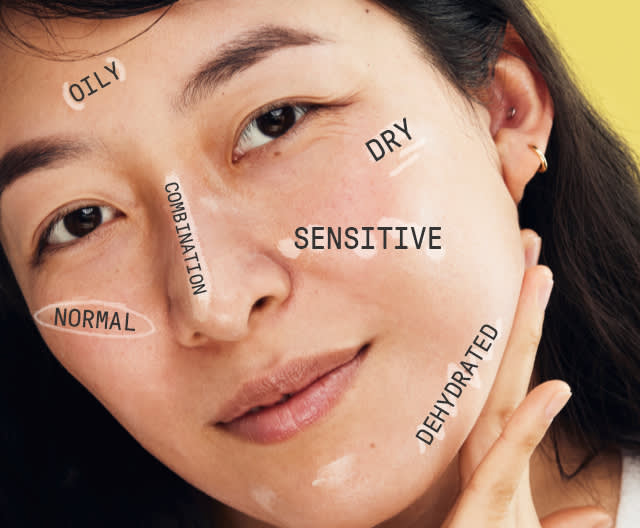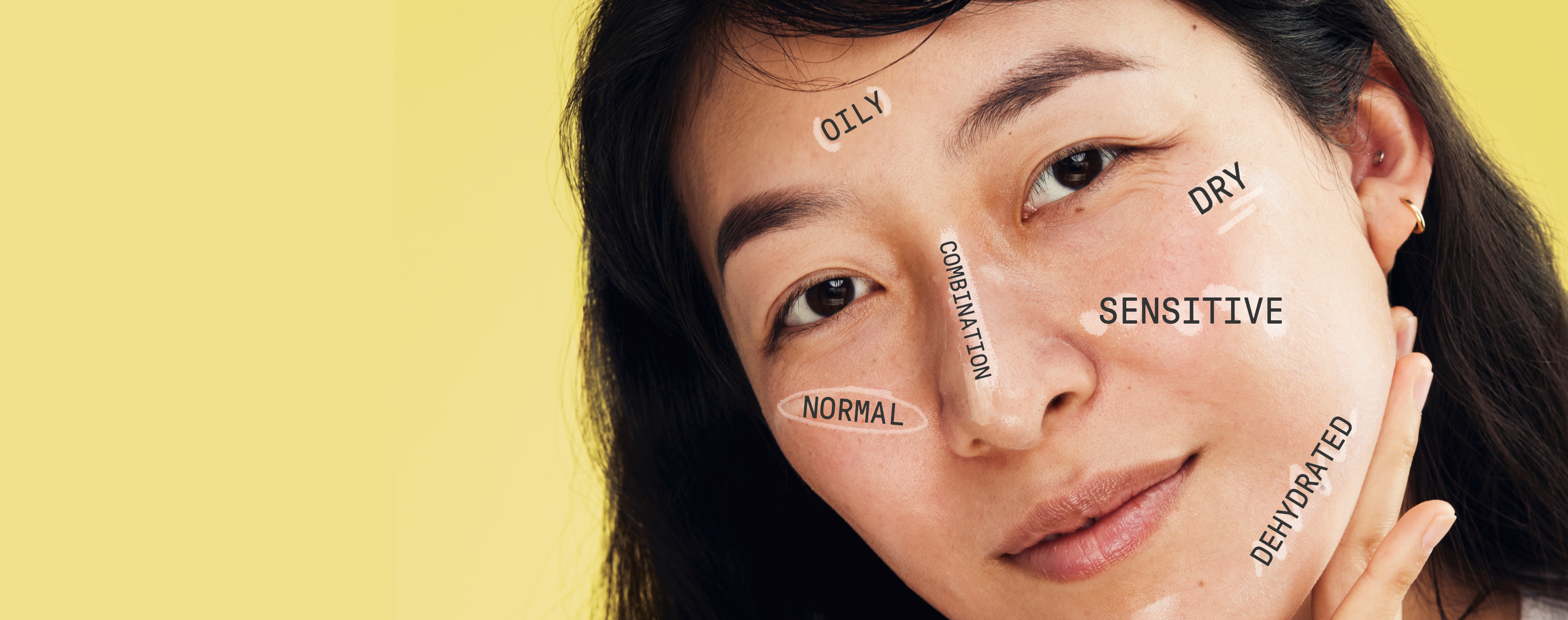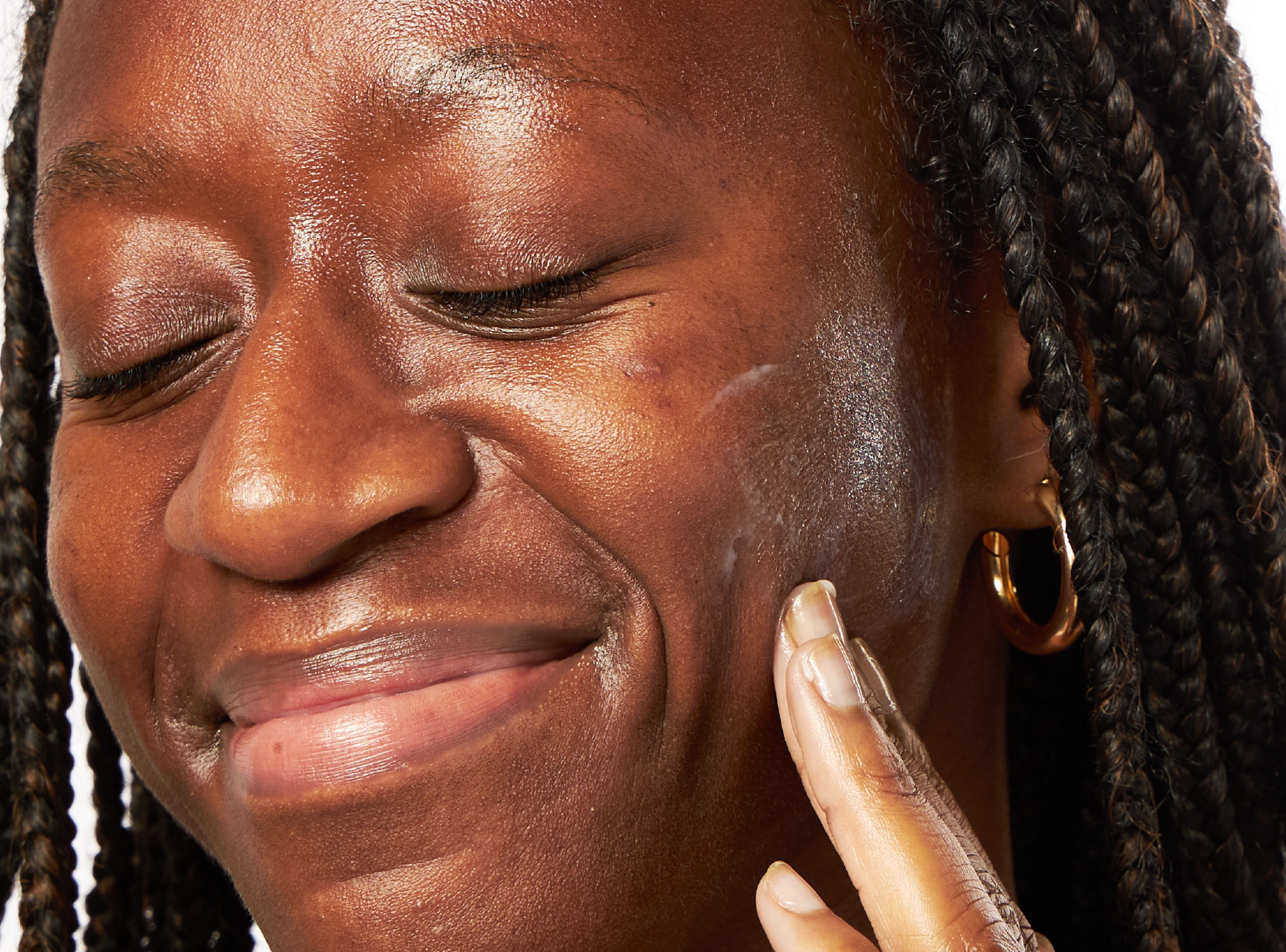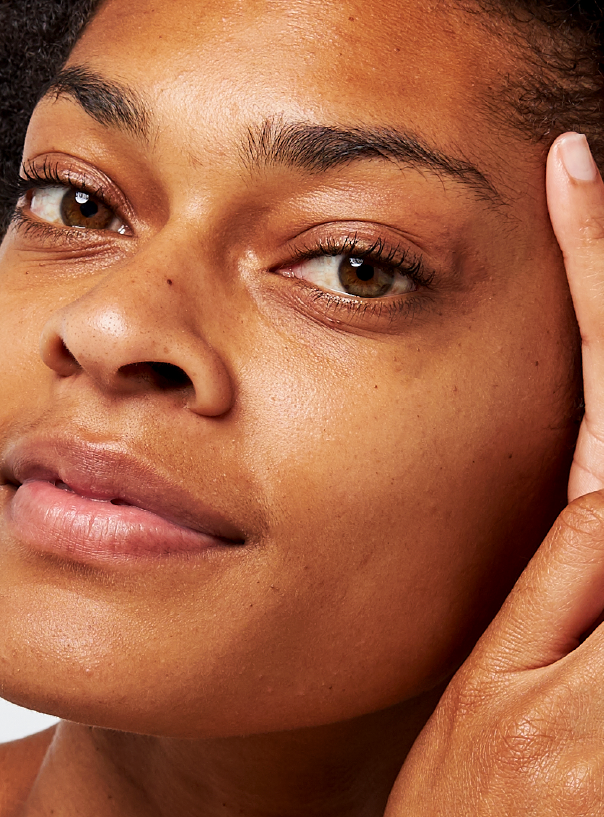Education
How to Identify Your Skin Type


SHARE
Education
How to Identify Your Skin Type
Medically reviewed by Aimee Paik, MD
Written by Sammy Draper
Last updated 8/1/2024
You know your favorite type of music and your favorite type of ice cream, but when it comes to your skin type, you might feel a little lost. Maybe you have an oily T-zone or tight, itchy skin right after a shower. Your skin could be breaking out one week and parched the next, leaving you confused about where your complexion fits into categories like “oily”, “combination”, and “dry”.
We’ve compiled a guide for you to figure out which type your skin (mostly) fits into - and remember, your skin probably won’t fit into one category for the rest of your life, but knowing the different types and characteristics can help you achieve happier, healthier skin. Whether you’re just starting a basic skincare routine or you’re a self-proclaimed skincare expert, knowing your skin type can help you make better choices and choose better products for your individual skincare needs.
Oily
Everyone has natural oils in their skin called sebum, but people with oily skin types have oversized sebaceous glands that produce excessive amounts of sebum. This type usually has a shiny or glossy appearance, along with larger pores.
Dry
This skin type is caused by a lack of water in the stratum corneum. People with dry skin experience tightness, flaking, more visible fine lines and sometimes red patches. It can also become itchy or irritated.
Combination
If you have combination skin, you’ll have oily areas (more commonly the T-zone) and dry patches (usually on the cheeks). Many people have this type, and some experts think it’s the most common skin type.
Sensitive
This skin type is characterized by burning, stinging, itching or redness. Sensitive skin is often triggered by certain products, dyes, fragrances, or exposure to other environmental irritants. It’s common to have this skin type in addition to another (oily and sensitive, dry and sensitive, etc.)
Dehydrated
This is technically not a skin type, but a skin condition. Dehydrated skin typically looks dull, with darker under eye shadows and more pronounced fine lines and wrinkles.
Tip: Pinch your cheek, and if it wrinkles with gentle pressure, your skin is probably dehydrated and in need of water.
Balanced
A balanced skin type is well-balanced, meaning it’s not dry or oily. The skin texture is smooth and pores are usually small. People with this type are not particularly prone to breakouts or redness and flakiness.
How Can I Tell Which Skin Type I Have?
You can figure out your skin type with two different tests you can perform at home.
Wash and Wait Test:
Wash your face with a gentle cleanser and lukewarm water, pat dry, and don’t apply any products or makeup. Wait 30 minutes.
The Day Test:
Start paying attention to how your skin looks throughout the course of the day.
Oily: Your skin looks glossy and shiny. If you press a napkin or a blotting tissue to your face, they’ll show a lot of oil.
Dry: Your skin feels tight and or flaky, and you feel the need to apply moisturizer ASAP.
Combination: Your skin has an unbalanced mix of oiliness and dryness (usually oily around the T-zone, dry around the cheeks).
Sensitive: Your skin is itchy, red, inflamed, or uncomfortable.
Balanced: Your skin doesn’t feel oily or dry, and you have no redness or itching.
Frequently Asked Questions Answered by Dr. Aimee Paik
How do I treat combination skin, to both hydrate dry areas and treat oily spots? Should I use different products for different areas of the face?
Since dry skin can lead to irritation or worsening acne, I would focus on areas of the face that are the most dry. I don’t think it’s necessary to use different products for different areas of the face. I would find a cleanser and moisturizer that works well for the driest part of your face and apply the product liberally with a thinner application to oilier zones of the face.
Can my skin type change over time, or depending on the season?
Yes, absolutely. As you get older, sebaceous glands become less active and your skin becomes less oily. Skin also typically gets drier during the winter, when there is less humidity in the cold air and heaters further dry out the skin.
Do I really need to moisturize if I have an oily skin type?
I still recommend a light moisturizer even if you have oily skin. Acne medications can be drying and when sebum falls onto dry skin it can ironically feel oilier. Furthermore, acne studies show us that the vehicle cream alone often modestly improves acne which is likely from the hydrating effect of a moisturizer and repair of the skin barrier.
How can I tell the difference between dehydrated and dry skin?
Contrary to popular opinion, the water you ingest has no effect on your skin’s hydration except in extreme cases of dehydration. Dry skin usually occurs because of overwashing, harsh soaps, and lack of moisturizers.
Knowing your skin type, like knowing your favorite breakfast food, can help make your routine a little easier and a lot more effective. When you’re armed with that knowledge, you can choose the right products and make more informed decisions. Looking to get prescription skin care online? Get started with Apostrophe and receive a customized treatment plan crafted by an expert dermatology team!
Like what you just read? Sign up for our email list to get the scoop on skincare science delivered straight to your inbox.

Deep Dives
A dermatologist shares his thoughts on the recent studies about benzoyl peroxide and benzene.
Read More
Education
What is milia?
What is milia? Today, we’re jumping into one type of bump that you may have heard about most commonly in infants — milia.
Read More
Education
Best moisturizer for acne-prone skin
If you have combination acne-prone skin, figuring out which moisturizer is best for your skin might be tough. In this guide, we break down the best moisturizer for combination, acne-prone skin.
Read More
